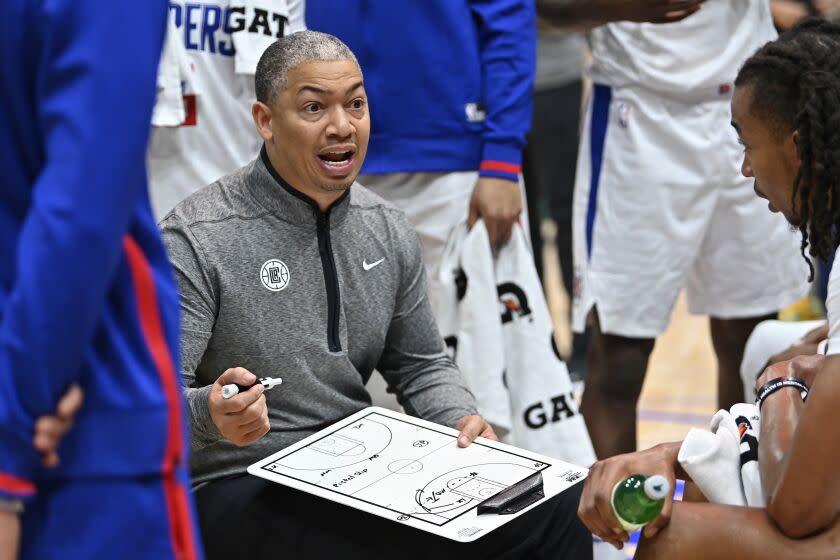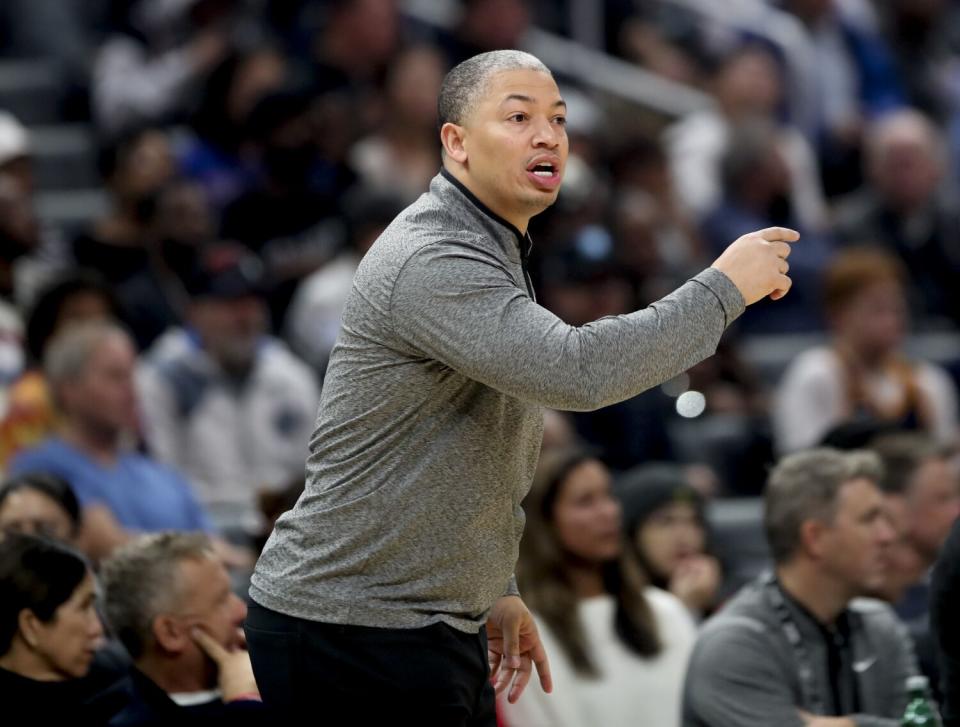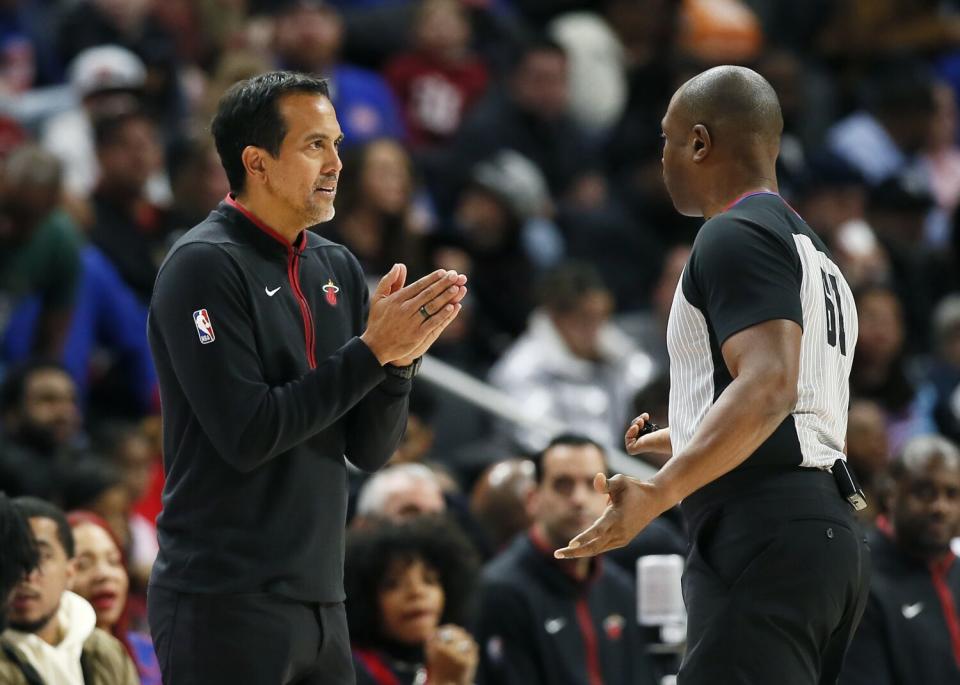
Before the first game of Cleveland’s opening-round playoff series of 2015, Cavaliers players gathered to watch a video meant for the team’s eyes only.
It opened with the city skyline, then flashed to a boxer, face shrouded, entering a ring.
For the next 8 minutes and 14 seconds, every conceivable season highlight, from LeBron James dunks to Kendrick Perkins jump hooks, played in rapid succession to a thumping beat. Spliced into the video were quotes from Malcolm X and Charles de Gaulle. There were motivational video clips of Ray Lewis, Bill Parcells and Red Auerbach extolling the virtues of a title and a voice-over from a narrator who intoned that “greatness does not come along very often.”
A clip of Muhammad Ali calling out critics was followed by a selection of ESPN commentators, including Brian Windhorst, Bill Simmons, Stephen A. Smith and Skip Bayless, who had doubting assessments of the Cavaliers. Then the lyrics of a Drake track cut in: I got enemies, got a lot of enemies.
The hype video was created in part by assistant coach Tyronn Lue. It took untold hours to complete, under an unforgiving deadline, and was intended for an audience of only a few dozen. It was playoff preparation at its most quintessential, a hugely important behind-the-scenes portion of the NBA calendar, and one that has rarely featured as much uncertainty as this season.
Thanks to the creation of the play-in tournament in 2020, which expanded the number of playoff-eligible teams from eight to 10 per conference, together with this season’s logjam in the middle of the Western Conference standings, the West awoke Friday with only four teams guaranteed to begin with a best-of-seven first-round series. That left seven others still in mathematical contention for the play-in tournament.
The unsettled standings have created intrigue for fans, hope for teams — and a prodigious amount of work for those tasked with the unglamorous yet vital behind-the-scenes jobs of pulling together every possible piece of intelligence on a potential opponent to create what amounts to a scouting report on steroids, even when there are four or five potential first-round opponents who might be faced. Each team’s process is unique.
Kobe Bryant asked video staffers to send him every video clip possible to help him study before a postseason series, but it’s not all eye-watering footage of high screens. Bryant liked when videos had scenes from the warrior movie “300” spliced in. Former Lakers players knew when to expect coach Phil Jackson’s favored “Glengarry Glen Ross” scene. Lue turned to Drake.

No matter what the master plan includes, it takes many hands to produce, and the “onus is on the video room,” Lue said, to put it all together.
This weekend, raise an energy drink — or perhaps say a prayer — for your favorite NBA team’s video staff.
“These guys can’t be sleeping right now,” said Patrick O’Keefe, a former video coordinator for the Clippers, Lakers and Denver Nuggets.
Some teams hand out a bound copy of what is universally referred to as the playoff “book.” When the Raptors began their 2019 championship run, Toronto guard Norman Powell received “a thick book of everything about what the team does,” with sections analyzing each opposing player, their tendencies, the team’s tendencies, diagrams of plays the opponent runs most frequently, and which they rely on most in given situations, such as baseline out-of-bounds plays.
When the Clippers played Game 7 on the road in Memphis in 2012, their luggage included a heavy box of “books” covering San Antonio, in case of victory. Hours after the Game 7 win in Memphis, the team’s former video coordinator, Mo Dakhil, was walking the aisles of the team charter handing them out to players and coaches on the flight to San Antonio.
Now many teams have gone all or mostly digital, including the Lakers and Clippers, with iPads replacing the “book.” The information that can be accessed now is more granular and delivered faster, said Clippers forward Nicolas Batum, who is in his 15th season. That technology, and the increase in team departments such as scouting and analytics, has decreased some of the most laborious prep work. Coordinators now use advanced software to compile video, no longer editing game footage using VCRs and TiVo recordings, leaving burned DVDs on each player’s chair, as O’Keefe did with the Lakers from 2005-12.
“We have very smart, intelligent basketball minds trying to formulate a plan and we’ll do all the hustle work in terms of collecting and gathering all the information, looking at it,” Lakers coach Darvin Ham said.
“But then it’s our job — my job in particular — to sift through it and pare it down to where it’s simple, efficient and something that our players would be able to take with them and understand how we want to attack and approach whichever opponent we get to face.”
Lue asks the assistant in charge of scouting the opponent all season to first make a full presentation to him. He decides the Clippers’ counter strategies, while also wanting to lock in on player tendencies. Centers and forwards are given videos showing tendencies of the other team’s “bigs.” Guards watch the opposing guards. Then they switch.

The next day, if time allows, Clippers coaches brief players on the opponent’s top 10-12 plays. The third day focuses on what opponents want from after-timeout plays, and then how the Clippers want to attack the opponent on both ends. According to a former video coordinator who was barred to speak publicly by his current team, here’s the kicker: “By Game 2, everything changes again.”
“You do all this prep for one game,” Lue echoed, “and six or seven of the plays you went over and tried to defend they don’t even run against you. That’s why the first game I just kind of throw it out the window because you don’t know what they’re trying to do.”
Video staffs, scouting departments and assistants begin the early stages of the book three or four weeks before the playoffs start, but the finish is complicated by scenarios like this season, with multiple potential opponents still in play until the final game. In 2014, the Clippers didn’t know they would face the Warriors in the first round until after their 82nd and final game, Dakhil said, but coach Doc Rivers ordered the “book” on the first-round opponent — whomever it would be — to be sitting on everyone’s chair as soon as the matchup was locked in. Rivers’ personal assistant had a connection at Kinkos, and the books were ready, Dakhil said.
In San Antonio, where Dakhil was also part of the video staff, coach Gregg Popovich asked that coaches receive full books but players receive lengthy video edits. Workloads like that can lead to pulling all-nighters. Dakhil is a tea drinker — packets of Lipton English breakfast in the morning and green in the afternoon — but after the Spurs’ video staff finished their first-round prep in 2010, they celebrated with Red Bull.
“I’m sitting in the team meeting and the caffeine is running through me too much, like my hand is shaking,” Dakhil said. “I’ve never had a Red Bull since.”
It would be understandable if others holding his former job might be downing them.
On Friday it was possible that the Clippers, Lakers, Warriors, Pelicans and Timberwolves could have landed anywhere from fifth to ninth, forcing each to prepare to face up to four or five play-in or first-round opponents.
“The play-in changed everything,” one longtime assistant coach said.
Teams in the series between the third vs. sixth and fourth vs. fifth seeds have at least five days to install their plan for their first-round opener.
Consider the teams that eventually meet in the one-eight matchup, however: The eighth seed will have to win two games in the play-in tournament to advance to a first-round series. That requires scouting three opponents. Then they fly to the conference’s top seed to begin a series on less than 48 hours of rest. As potential opponents are eliminated, the prep work for that team never sees the light of day. That quick turnaround keeps the top seed guessing who it will ultimately face, too.
In the playoffs, the stakes are raised. So are the production values. The hype video Lue created in Cleveland in 2015 drew inspiration from Jackson, his former coach with the Lakers, who was famous for splicing movie references into film sessions. Whenever the Lakers reached three wins, one victory away from clinching a series, the next practice’s video edit always included Alec Baldwin’s “Always be closing” speech from “Glengarry Glen Ross.”
“I guess the statute of limitations is out,” O’Keefe said. “One of the years against Phoenix, he thought our advantage was to go inside in the triangle [offense] that way, so we used Denzel Washington in ‘Inside Man.’”

O’Keefe slept well — when he did sleep — because he felt the video staff’s work was the backbone supporting coaches’ and players’ playoff preparation.
“You knew you were kind of appreciated,” he said.
Franchise leaders clearly see value in the video job, too. Sacramento’s Mike Brown, Miami’s Erik Spoelstra and former Lakers coach Frank Vogel among the video alumni who have gone on to become head coaches. Clippers associate head coach Dan Craig came up in the Heat video room under Spoelstra. If a Video Coordinator Hall of Fame is ever created, it would surely include the moment during the 2015 NBA Finals when Golden State coach Steve Kerr credited video staffer Nick U’Ren with proposing a key lineup change that beat the same Cavaliers team that had watched Lue’s hype video only weeks earlier.
Yet like equipment managers, advance scouts and medical staffers, video staffers belong to a class akin to basketball’s electricians and plumbers — largely anonymous roles that ensure everything else runs smoothly. Especially in the playoffs.
As a player “you know it’s a lot of work because of the prep, but you don’t understand the day-to-day stuff until you start coaching,” Lue said. “Like, ‘Damn, he had to do all that?'”
Dakhil learned that on the eve of one postseason appearance with the Clippers, while rebounding for one of the team’s guards.
“He was like, ‘You look like a zombie. Are you OK?’” Dakhil said. “’I’m like, well I slept here last night, so, no, I’m not OK. Getting ready for the playoffs, so didn’t sleep much.”
This story originally appeared in Los Angeles Times.




